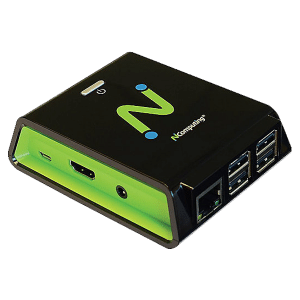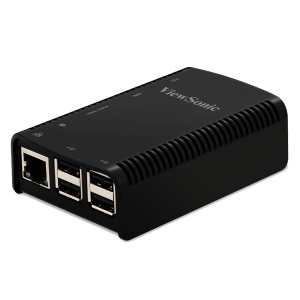“It is estimated that organizations spend upwards of 1,000 hours a week on detecting and containing insecure endpoints. In order to effectively scale their VDI, organizations must educate themselves on the many options, challenges, and benefits they are likely to face before diving into virtualization.” >> Learn more
Saving on costs is important when it comes to making the shift to VDI. For this reason, many companies choose Thin Clients as their preferred way to get the most bang for their buck –delivering cutting-edge hardware that performs as well as Desktop PCs at a reduced price. However, in a world of pricey devices and in scenarios where sometimes as many as thousands of devices must be added at a time, small differences in the price of individual Thin Clients can make a huge difference to your overall budget.
Traditional x86 vs Raspberry Pi Thin Clients – Both Are Viable
Over the past few years, the Raspberry Pi Thin Client has evolved into a viable, enterprise-grade endpoint alternative or complement to traditional Thin Clients. Thanks in part to advances made by our team, today enterprises have a real, mature solution to allow them to potentially scale their VDI network by thousands of devices at a fraction of the cost of investing in an entire, new network of traditional Thin Clients.
The Raspberry Pi Thin Client is already productized by several leading hardware brands including ViewSonic and NComputing, and it is even available with exclusive Citrix features, like Citrix Casting, on the Citrix Ready workspace hub. One of the advantages of purchasing a fully assembled Raspberry Pi Thin Client is that you get all of the features you require to connect to your enterprise VDI and to start being productive right out of the box including 2 HD displays, Skype for Business, H.264 decoder, connections to major environments and more.



What if I Want to Customize and Build My Own Raspberry Pi Thin Client?
There are situations where customers want to create their own, enterprise-grade Raspberry Pi endpoints from scratch. The reason for this varies case by case, ranging from branding purposes to solving specific and unique challenges (for example IoT or some healthcare use cases). For companies who want to create their own Raspberry Pi Thin Client, Stratodesk can power such devices similarly to how we would x86 Thin Clients. Simply deploy NoTouch onto your device and benefit from enterprise-grade NoTouch features. Additionally, Raspberry Pis powered by NoTouch works seamlessly with Node-RED and Azure IoT to solve innovative, enterprise IoT challenges.

When Should You Consider Traditional Thin Clients?
Traditional Thin Clients are the proven standard for end-user computing. In situations where more powerful hardware is necessary, it might be the right choice for you to invest in a traditional Thin Client. The impact of purchasing pricier devices might also be felt less if you are only purchasing a few Thin Clients, as opposed to purchasing thousands.
In scenarios where the use case requires extraordinary amounts of processing power, NoTouch can run on the most cutting-edge and powerful x86 Thin Client device out there. These outlying circumstances might be, for example, running specific, specialized software, or powering more than two HD displays. In such scenarios, NoTouch on x86 Thin Clients will certainly suffice. If you already have existing devices to use, NoTouch is capable of repurposing x86 Thin Clients, laptops, and PCs and managing them in the same environment as Raspberry Pi Thin Clients.



Stratodesk NoTouch Raspberry Pi Thin Clients
Stratodesk NoTouch software is the perfect solution for the common problem of scaling endpoints. NoTouch can run on any x86 device, and is able to incorporate both x86 and Raspberry-based devices into your VDI environment –fluidly managing them as one collective whole. A combination of Stratodesk software with low-cost Raspberry Pi hardware is what makes this enterprise-grade endpoint a possibility, and available at a fraction of the cost of a traditional Thin Client. This means that with NoTouch, you have access to unlimited saving potential and flexibility options to scale your VDI. So whether you are going for affordability or powerful hardware, or a little bit of both, NoTouch unlocks the full benefit of secure, flexible virtual desktop and end user computing without compromises.
Ready to Invest –What are Your Options?
Depending on your situation, several alternatives are available to you. First, you can take advantage of Stratodesk NoTouch PC Repurposing to get full advantage of your existing devices. Second, to scale your network, you can purchase a NoTouch Raspberry Pi Thin Client. If you are in the EU, we also have several NoTouch powered x86 Thin Clients available, backed by powerful and reliable HP hardware. If you are in North America or anywhere else in the world, your best bet for a NoTouch native device is to purchase a Raspberry Pi Thin Client directly from one of our partners: NComputing, ViewSonic, or ClearCube. The Citrix Ready workspace hub, powered by NoTouch OS, is available from NComputing and ViewSonic for Citrix customers and comes with advanced, next-generation features exclusive to the workspace hub, including Citrix Casting and Session Roaming. For all other use cases, you’ll want to purchase the C3Pi from our partner ClearCube which connects to all other major VDI environments.

